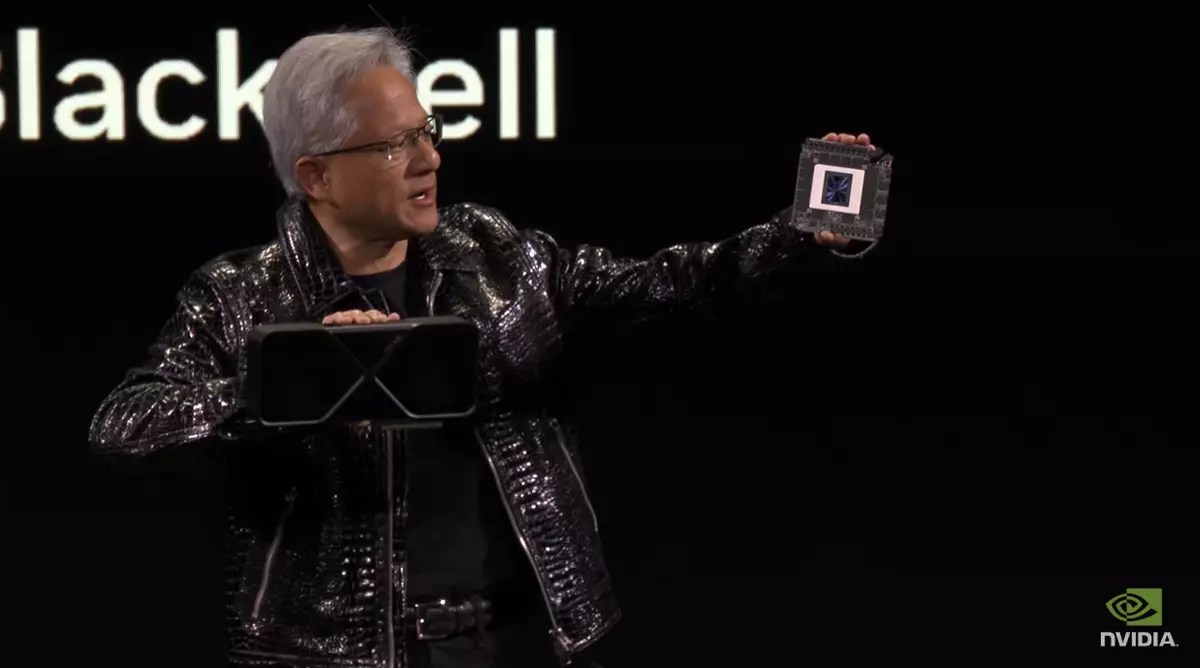At the recent CES 2025 keynote, Nvidia unveiled its highly anticipated RTX Blackwell GeForce GPUs, capturing the attention of both gamers and industry experts alike. Jen-Hsun Huang, Nvidia’s CEO, made a bold statement that piqued interest across the tech community: the new RTX 5070, touted as delivering “RTX 4090 performance at $549.” This announcement challenges the traditional pricing structure in the graphics card market and sets a new benchmark for performance versus cost. The RTX 4090 previously commanded a price of $1,599, creating a stark contrast that underscores the significance of this new offering.
At face value, the RTX 5070’s pricing indicates a remarkable shift. A GPU previously priced much higher now has its performance counterparts available at significantly reduced prices. However, it is crucial to scrutinize Nvidia’s claims. While the RTX 5070 does present an extraordinary value proposition, the performance parity with higher-tier cards like the RTX 4090 is primarily reliant on advancements in Nvidia’s Deep Learning Super Sampling (DLSS) technology. Specifically, the newly introduced DLSS 4 utilizes a Multi Frame Generation feature that allows gamers to potentially generate up to three additional frames using AI-calculated extrapolation.
This technique raises important questions about how performance benchmarks are measured. Rather than assessing raw performance capabilities of the GPU itself, buyers must consider the experience as shaped by the proliferation of software designed to leverage DLSS 4. With 75 applications and games set to support this new technology at launch, the effectiveness of the RTX 5070’s performance will depend significantly on the optimization of those specific titles.
The RTX Blackwell series does not merely consist of the 5070. A complete lineup has been unveiled, offering a variety of options for different consumer needs. The range includes the flagship RTX 5090, priced at an eye-watering $1,999, and the RTX 5080, which will be available for $999. These models further illustrate Nvidia’s strategy for segmenting its offerings within the high-end GPU market while still maintaining a semblance of affordability at the entry point with the RTX 5070.
While the RTX 5090’s performance is speculated to be twice that of its predecessor, the RTX 4090, the question remains whether such claims can be substantiated in terms of practical usage. It’s worth noting that despite the price hike of the 5090, the stability of the price point for the RTX 5080 compared to the previous generation suggests that Nvidia is mindful of its consumer base and the fluctuating economic landscape of the tech sector.
Early reactions to Nvidia’s latest announcement have been mixed yet largely optimistic. With GPU shortages affecting gamers globally and the high prices of previous generations, the introduction of the RTX Blackwell series may signify a turnaround for consumers seeking to upgrade their systems. The sentiment among tech enthusiasts indicates a desire for reasonably priced and powerful GPUs, which the new series appears poised to deliver efficiently.
However, skepticism also lingers; the notion that substantial price reductions truly correlate with increased accessibility remains to be seen. As per the historical context of GPU releases, pricing can be inconsistent and does not always align with performance, underscoring the necessity for consumers to weigh their purchasing decisions carefully.
Nvidia’s RTX Blackwell series promises to reshape the landscape of high-performance graphics cards, bridging the gap between premium power and affordability. With the promise of cutting-edge technology and the backing of AI-enhanced performance through DLSS 4, these new GPUs may indeed provide the user experiences they advertise. The launch of the RTX 5090 and RTX 5080 on January 30, followed by the RTX 5070 Ti and RTX 5070 in February, will soon provide clarity on how these innovations will play out in the real world.
While Nvidia appears to be making strides toward more accessible high-performance graphics, the importance of due diligence cannot be overstated for avid gamers and consumers looking to invest in future-proof technologies. Only time will reveal whether these innovations will live up to the lofty promises set forth during this exciting announcement.


Leave a Reply